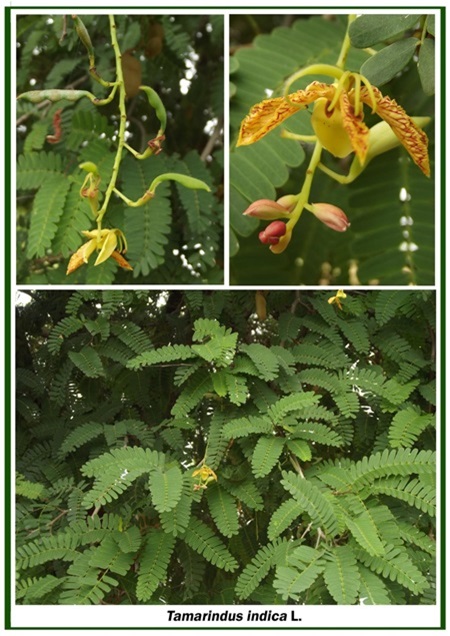Tree Details
 | |
| Tamarindus indica L. | |
| Caesalpiniaceae | |
| Tamarind | |
| புளிய மரம் | |
| Tree | |
| Tropical Africa, Asia and Australia | |
| Habit: large evergreen tree up to 30 m tall, bole usually, bark rough, fissured, greyish-brown. Leaves: Alternate, compound, with 10-18 pairs of opposite leaflets; leaflets narrowly oblong, petiole and rachis finely haired, midrib and apex rounded to almost square, margin entire, Stipules present. Flowers: Attractive pale yellow or pinkish, in small, lax spikes about. Flower buds completely enclosed by 2 bracteoles, which fall very early; sepals 4, petals 5, the upper 3 well developed, the lower 2 minute. Fruit: Pod, indehiscent, subcylindrical, straight or curved, velvety, rusty-brown; the shell of the pod is brittle and the seeds are embedded in a sticky edible pulp. Seed: 3-10, approximately, irregularly shaped, testa hard, shiny and smooth. | |
| Throughout the year | |
| Procyanidin B2, epicatechin, tartaric acid, mucilage, pectin, arabinose, xylose, galactose, glucose, uronic acid and triterpen. | |
| Parasitic infestations, wound healing, constipation and inflammation. | |
| Front of the commerce department |